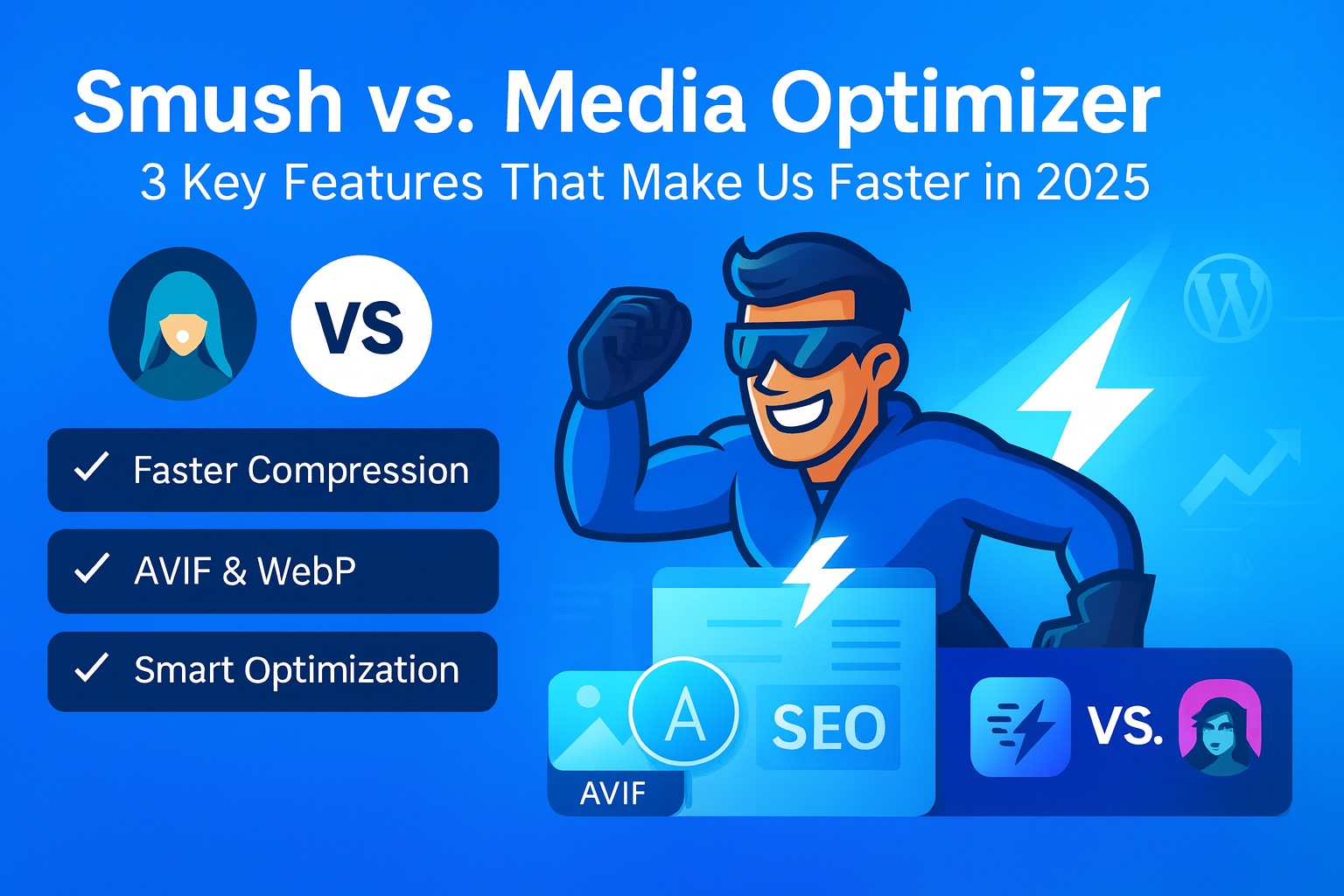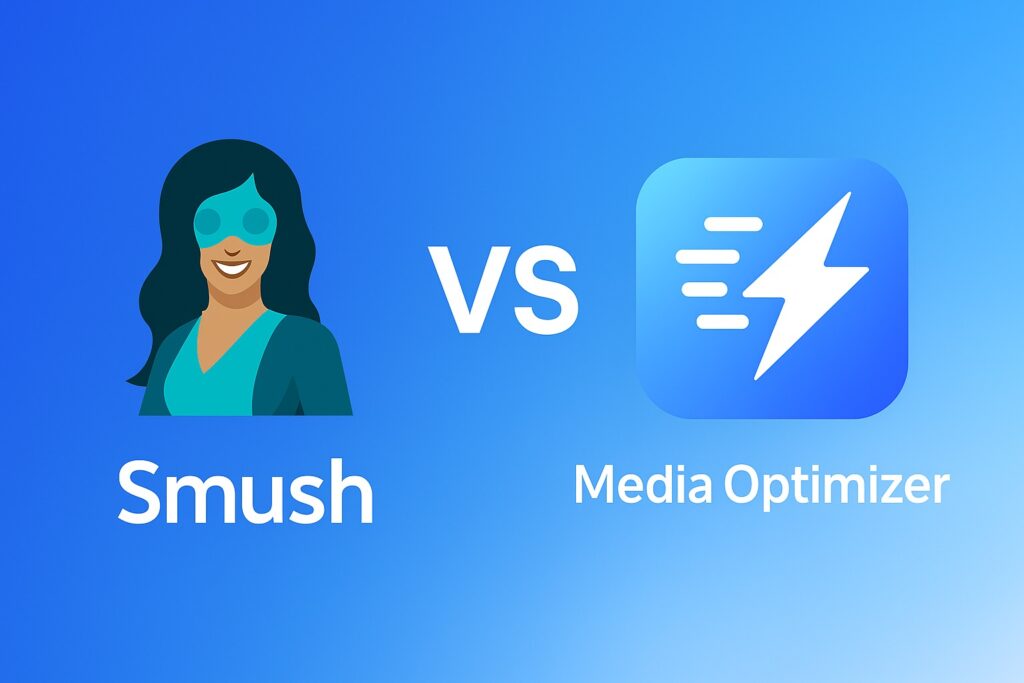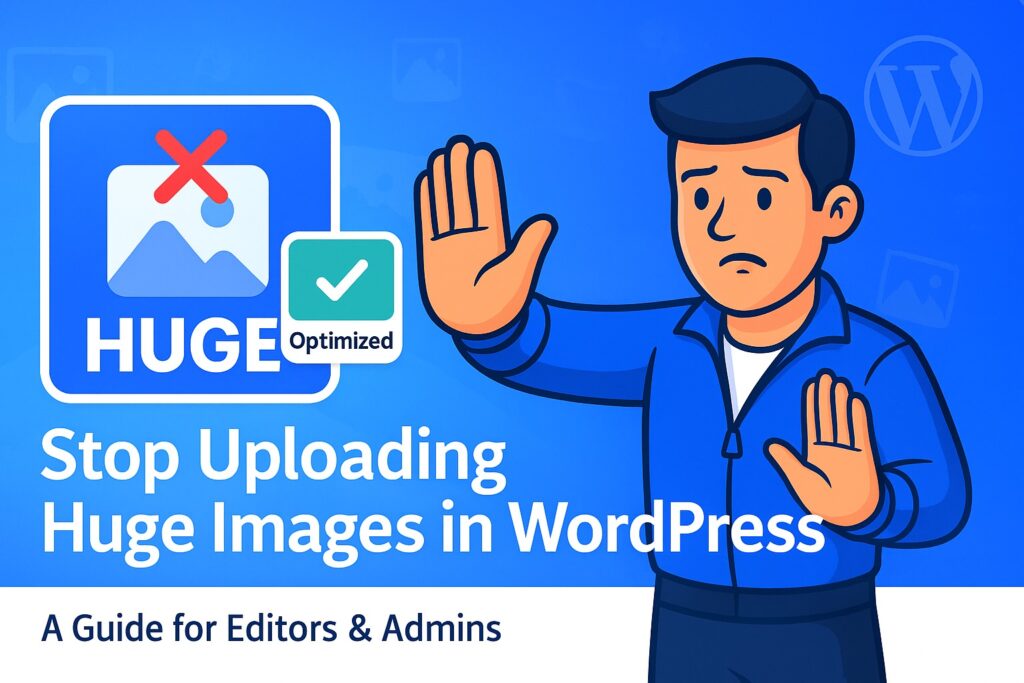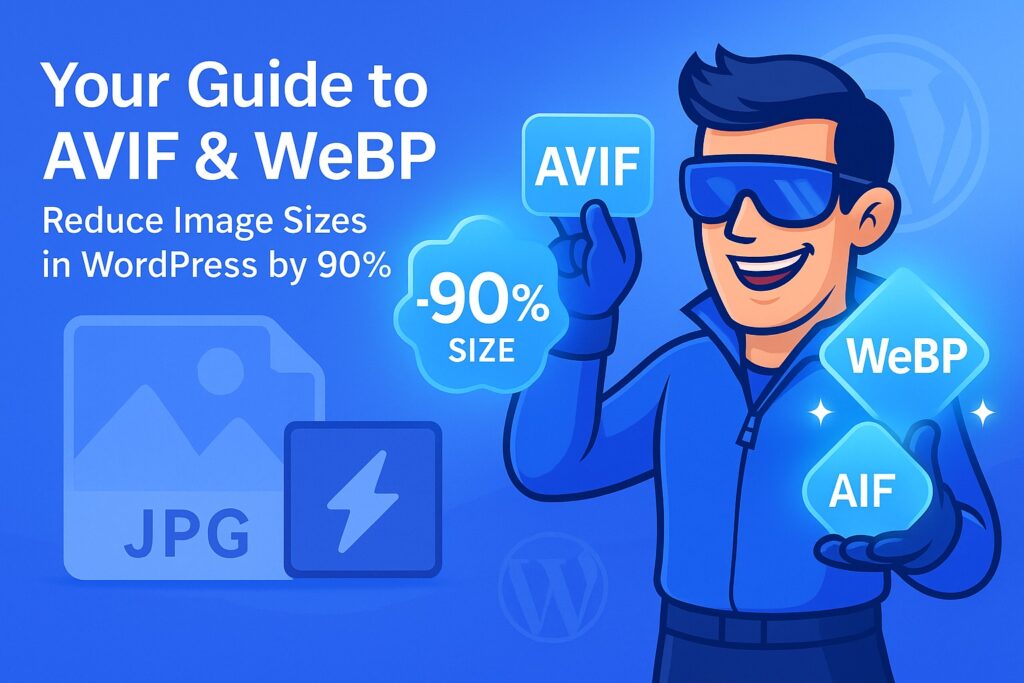Smush vs. Media Optimizer: 3 Key Features That Make Us Faster in 2025

For over a decade, Smush has been a household name in the WordPress ecosystem, helping millions of users compress their images. It’s a reliable workhorse that established the importance of image optimization. But as the web evolves, so must our tools. The performance standards of today, dictated by Google’s Core Web Vitals and user expectations for near-instant load times, demand more than just simple JPEG compression. They require a smarter, more aggressive, and more efficient approach.
This is where the new generation of optimization tools comes into play. While Smush laid the groundwork, platforms like Media Optimizer are built from the ground up to leverage the cutting-edge technologies that define web performance in 2025 and beyond.
This isn’t just about making images smaller; it’s about a fundamental shift in strategy. In this article, we’ll break down the three key architectural and technological differences that make Media Optimizer a significantly faster and more powerful solution than Smush for any modern WordPress site.
Feature 1: The Compression Engine – Beyond WebP to the AVIF Revolution
The single biggest factor in image optimization is the compression technology itself. This is where the first major divergence between Smush and Media Optimizer appears.
Smush: The WebP Standard
Smush (in its Pro version) offers WebP conversion. This is a massive step up from legacy JPEGs. As we know, WebP images are, on average, 25-35% smaller than their JPEG counterparts at the same visual quality. For years, this has been the gold standard, and Smush does a commendable job of delivering these files through its CDN.
However, WebP technology, while excellent, is now over a decade old. A newer, far more powerful format has emerged, and it’s changing the game entirely.

Media Optimizer: Mastering AVIF for Maximum Speed
Media Optimizer was built with the AVIF (AV1 Image File Format) at its core. AVIF is not just an incremental improvement; it’s a quantum leap in compression efficiency.
Developed by a consortium of tech giants including Google, Apple, and Netflix, AVIF leverages the compression algorithms of the AV1 video codec. The results are astounding:
- AVIF files are up to 50% smaller than WebP files of the same visual quality.
- Compared to an original JPEG, savings can reach an incredible 80-90% without any noticeable degradation.
What does this mean in real-world terms? If a 100 KB JPEG becomes a 70 KB WebP with Smush, Media Optimizer can often turn that same image into a 35 KB AVIF file. When you multiply this effect across dozens of images on a page, the impact on your Largest Contentful Paint (LCP) score and overall load time is dramatic.
While Smush offers a solid, established technology, Media Optimizer provides access to the next generation of compression, giving your site a tangible speed advantage that older tools simply cannot match.
Feature 2: The Delivery Strategy – Guesswork vs. Guaranteed Performance
Having powerful formats is one thing; delivering them intelligently is another. This is perhaps the most critical difference in philosophy between the two plugins.
Smush: A One-Size-Fits-All Approach
When you enable WebP conversion in Smush Pro, it generates WebP versions of your images and serves them to compatible browsers. This is a solid, industry-standard approach. However, it operates on a simple premise: “if the browser supports WebP, serve the WebP file.”
This strategy has a hidden flaw. While WebP is usually smaller than JPEG, it’s not always the case, especially with certain types of complex, textured images. More importantly, it completely ignores the existence of AVIF. You are locked into a single “next-gen” format, leaving a massive amount of potential performance gains on the table.
Media Optimizer: “Smart Format Selection” – A Feature You Won’t Find Anywhere Else
We recognized that the “WebP or AVIF?” debate was the wrong question. The right question is: “Which format is the absolute smallest for this specific image?”
This led us to develop our flagship feature: Smart Format Selection. It’s an intelligent delivery system that works like this:
- Dual Generation: For every image, our cloud API generates both a highly optimized WebP version and a hyper-compressed AVIF version.
- Intelligent Analysis: The plugin then compares the file sizes of these two versions. Sometimes, for simple graphics, a lossless WebP might be marginally smaller. Other times, for complex photographs, the AVIF version will be drastically smaller.
- Guaranteed Best Delivery: Media Optimizer configures your server to make a three-way decision for every visitor. It checks:
- Does the browser support AVIF, and is the AVIF file the smallest? Serve AVIF.
- If not, does the browser support WebP? Serve WebP.
- If neither, serve the original JPEG/PNG (a rare fallback for very old browsers).
This isn’t a one-size-fits-all solution. It’s a bespoke, per-image, per-visitor optimization strategy that runs automatically. With Smush, you get the benefits of WebP. With Media Optimizer, you get the guaranteed best possible result for every single image, every single time, by intelligently leveraging both AVIF and WebP.
Feature 3: The Workflow – Manual Control vs. True Automation
How a plugin integrates into your daily workflow determines whether it’s a helpful tool or a constant chore. This is where we focused on creating a “set it and forget it” experience.
Smush: A Hands-On, Server-Reliant Workflow
Smush’s optimization process is robust but often requires user intervention. The bulk optimization runs on your server (or their WPMU DEV servers if you’re a member), processing images in batches. While it has an option to optimize on upload, its discovery of images from other plugins, themes, or custom directories can be less comprehensive. Managing client sites often means logging into each one to check on optimization status or re-run a bulk process.
Media Optimizer: A Cloud-Powered, Fully Automated Ecosystem
We designed Media Optimizer for true automation, especially for professionals and agencies who value their time.
- Cloud-Based Offloading: All heavy-lifting—the compression and conversion of images—is done on our powerful, dedicated cloud infrastructure. Your server’s CPU is never touched. This means you can optimize thousands of images in bulk without any risk of slowing down your site or causing timeouts, a common issue with on-server optimization plugins.
- Innovative Auto-Scan: Media Optimizer doesn’t just watch the Media Library. Our unique Auto-Scan feature actively detects when you activate new plugins (like sliders, galleries, or page builders) or switch themes. It then automatically scans their directories for images and adds them to the optimization queue. You install a new gallery plugin, and its assets are optimized without you having to lift a finger.
- Agency-First Features: We built tools specifically for professionals. With Settings Sync, you can configure one site perfectly and then export a JSON file to instantly import those settings on all your client sites. Upload Policies (a PRO feature) allow you to set file size and dimension limits for different user roles, preventing editors from uploading massive, unoptimized photos that slow down the site.
While Smush provides the core tools for optimization, Media Optimizer delivers a complete, intelligent ecosystem designed for efficiency, automation, and professional-grade site management.
Conclusion: Choosing the Right Tool for the Modern Web
Smush is a legendary plugin that has rightfully earned its place in the WordPress hall of fame. It introduced millions to the concept of image optimization and provides a solid, reliable service.
However, the web of 2025 is not the same as the web of 2015. Performance is no longer a “nice-to-have”—it’s a prerequisite for success. To compete today, you need a tool that not only embraces but masters the latest technologies.
- If you need a better-than-JPEG solution, Smush is a fine choice.
- If you demand the absolute fastest load times, want to leverage the groundbreaking compression of AVIF, and need a fully automated, cloud-powered workflow that guarantees the best possible result for every image, then Media Optimizer is the clear successor.
Don’t settle for yesterday’s standard. Give your website the speed it deserves.
Experience the Difference for Yourself.
Download Media Optimizer and get 200 free premium credits to test our “Smart Format Selection” and see the power of AVIF with your own images. No strings attached.


